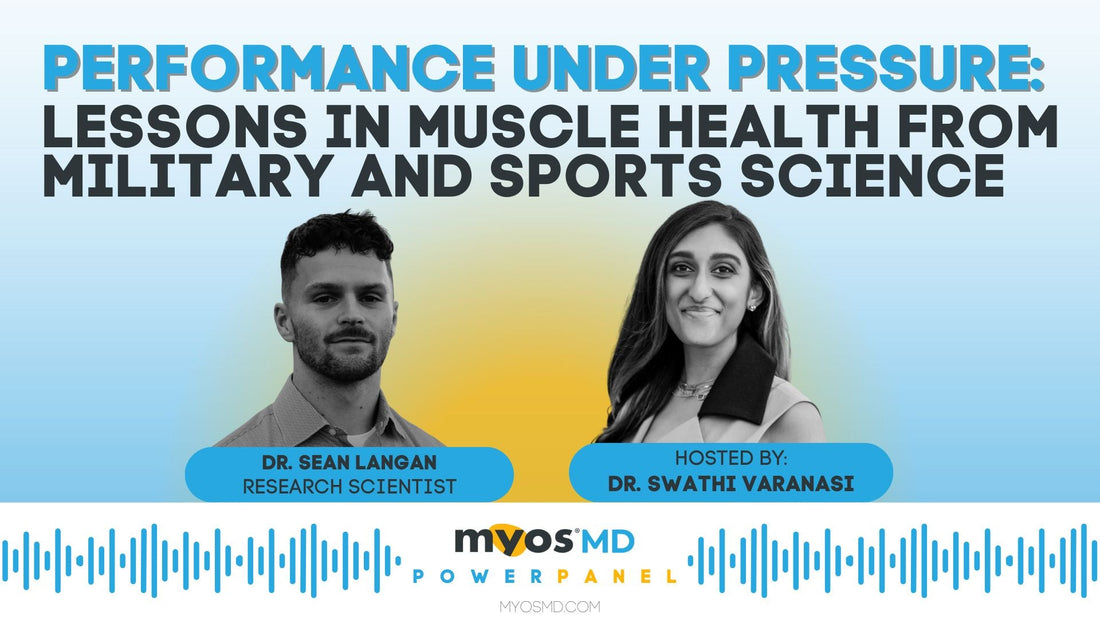About Dr. Langan: Muscle Health Meets Military & Sport
Dr. Langan’s career spans athletic training, Olympic weightlifting biomechanics, and human performance research at the U.S. Army Research Institute of Environmental Medicine. His lens is practical and physiology-forward: how to keep muscle online when heat, altitude, hypoxia, sleep loss, and heavy workloads threaten to shut it down.
Muscle Health Under Extreme Conditions
Across athletes, soldiers, and patients, Dr. Langan sees the same pattern: “an imbalance between what you demand from the muscle and how much you are fueling it and recovering from it.” He cautions that environmental stress “adds another layer of intensity and load on the body,” so training and recovery need to reflect that reality.
At altitude, the challenge compounds: “their energy deficit can be upwards of like 40 to 50 percent of what they actually need.” Appetite dips, activity soars, and sleep suffers—“if you sleep for four hours a night for a week, it can decrease muscle protein synthesis by around twenty percent.” The fix begins with the basics. “You do want to include some resistance training… mechanical load on the muscle is the number one way to preserve lean mass.”
Protein Targets & Practical Nutrition for Muscle
Protein isn’t just for bodybuilders. As Langan puts it: “Protein intake is really important… we now know that endurance athletes need as much, if not more, than those strength athletes,” supporting the “mitochondrial or energetic machinery” that powers aerobic work. His general guidance: “you want to get about point eight grams per pound of protein of your body weight,” increasing with higher training loads. For older adults, he stresses a per-meal threshold—“at least… thirty grams of protein per meal to stimulate protein synthesis.”
Fortetropin® & MYOS MD: Targeted Support for Muscle Health
Beyond calories and amino acids, Langan points to a complementary pathway: “There are supplements like Fortetropin… which act on a different mechanism—inhibiting myostatin… it kind of works on the back door.” That mechanism underpins MYOS MD. As the panel notes, “Fueled by the revolutionary proprietary ingredient, Fortetropin, MYOS MD is trusted by healthcare providers nationwide to deliver real results backed by science.” While no supplement replaces resistance training and adequate protein, this route gives clinicians another lever when muscle preservation is mission critical.
Hydration & Recovery: Keeping Performance From Slipping
Hydration research is nuanced, but the principles are actionable. Start sessions well-hydrated; learn your sweat rate by weighing before and after; and replace fluid intelligently. “You want to include some salt,” and in multi-session days “drink about… one point five times how much you lost.” He also highlights gut training—practice taking in fluids during exercise to reduce GI distress when it counts.
Watch the Conversation
Action Steps for Clinicians & Coaches
First, make resistance training non-negotiable at every age and ability—bodyweight sit-to-stands, wall sits, stair work, and loaded carries count, especially for beginners. Second, hit protein targets consistently and meet per-meal thresholds. Third, consider Fortetropin (via MYOS MD) as an adjunct when environmental stressors, aging, or recovery constraints stack the deck against muscle. Finally, respect the “hidden” variables—sleep, heat, altitude, hydration—that quietly erode performance unless proactively managed.

